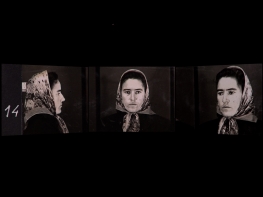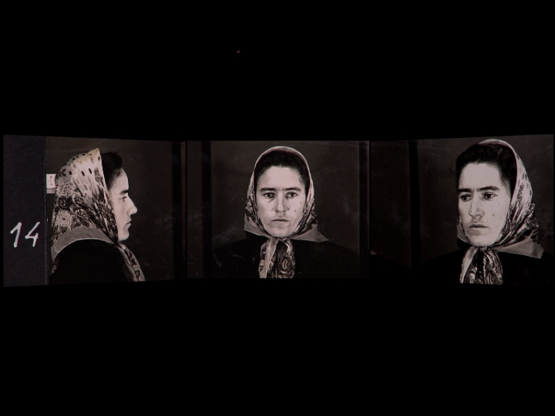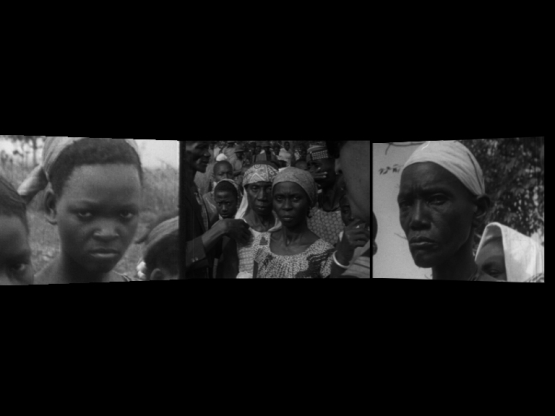Based on the 2005 film Natureza Morta – Visages d’une Dictature, the installation Natureza Morta/Stilleben evokes a fundamental theme in the history of the visual arts. The German term stilleben originates from the Dutch word stilleven, which means immobile life or existence and which, in the Latin languages, corresponds to the paradoxical concept of natureza-morta [dead nature]. Susana de Sousa Dias’s work explores the ambiguous boundary between these two antagonistic realities, highlighting the instant that separates life from death, immobility from motion.
The work resulted from an extensive investigation into official documents dating from the dictatorship that ruled Portugal for forty-eight years, bringing together photographs of political prisoners, war reports and propaganda documentaries in a montage that recovers rushes cut from the final versions displayed at the time. Combining photography and film, the artist reduces the speed of the original recordings in order to narrow the gap between the cinematographic sequence and the still image. By omitting the sound of the original films and rejecting any form of narration or subtitle, Susana de Sousa Dias deconstructs and subverts the official narratives, revealing the contradiction and strangeness behind the regime's iconography.Like the photographs of political prisoners, the piece unfolds in three projected images, forming a triptych whose spatiality is completed by António de Sousa Dias’s soundtrack.
No less disturbing than the images, the music emerges here as a possible guiding thread that allows the spectator to reorder a fragmented reality and construct other narratives.
Natureza Morta thereby proposes a change of scale and perspective which diverts the spectator from the staging of a collective memory in order to focus on the intimate territory of individuality, distracting attention from the theatrical gestures of power in order to take an attentive and prolonged look at the anonymous gestures of daily survival.Suspended in the slowness of the images and the musical interpolations, between terror and empathy, the spectator witnesses a ghostly parade of the living-dead and the dead-living across an expectant nation, conditioned by repression and paralysed by fear from which not even the revolution, at the end of the film, appears to rescue them completely.
Representative of Susana de Sousa Dias’s artistic journey around memories of the Estado Novo, Natureza Morta/Stilleben is without a doubt one of her most poetic and also disquieting works.
Helena Barranha













